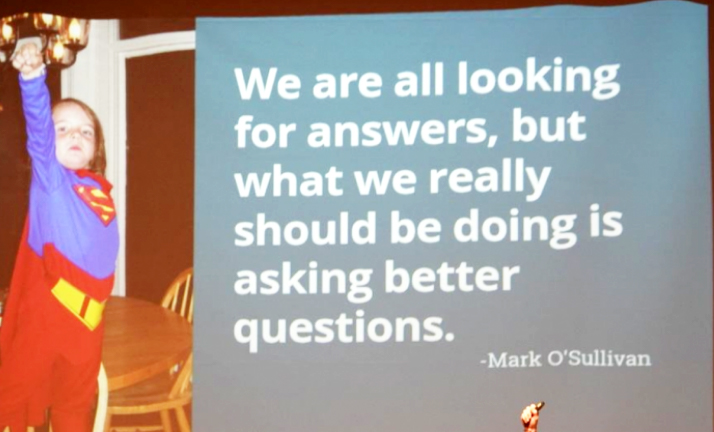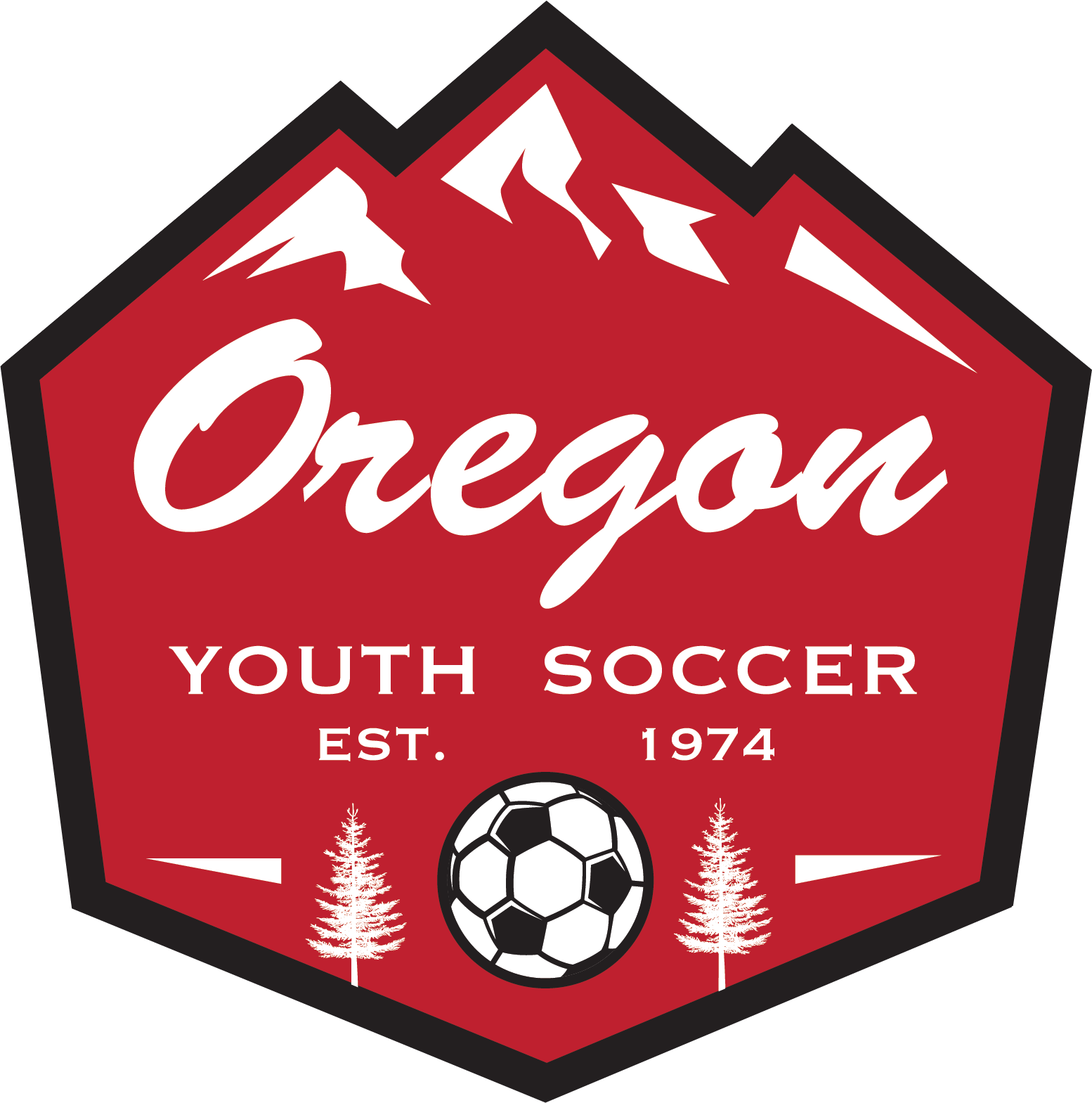
7 Questions Every Soccer Parent Should Ask
As parents we have a tendency to try and find a solution to help our children. Our child is struggling in math, so we find a tutor. Our child gets a cavity so we buy a different toothbrush. Our child doesn’t make the team, so we hire a personal trainer. We look for answers to solve problems with solutions that make the most sense to us in the moment. But, as Mark O’Sullivan from AIK in Sweden recently said to me: “We are all looking for answers, but what we really should be doing is asking better questions?”
When we ask better questions, we begin to think critically and uncover new answers to problems. We begin to understand different complex issues that exist, that maybe are in fact more aligned to the root cause of the problems. We uncover new paths to solutions – possibly more effective ones.
My most recent presentation to soccer parents and coaches in Utah with Wasatch SC and MetaSport FC was built around this idea of asking the right questions. In the presentation, which was done in collaboration with Mark, we posed 7 questions soccer parents should be asking themselves when it comes to helping their child thrive on the soccer fields and in life.
1. What does thriving look like?
This was a question we posed to the hundreds of parents in attendance. The answers ranged from “feel good about themselves” to “wants to go to practice” to “is having fun.” We then dove a bit deeper in the life lessons our children should be reaping from their soccer experience. Our child is thriving when they are learning skills they will take with them into adulthood: Teamwork, leadership, communication, resiliency, finding new limits, etc.
Is it possible to reframe our children’s soccer experience and say they are thriving simply when we know they are learning life lessons? A parent posed that question to the audience and it really resonated in the room.
2. Do I understand how children learn?
This is one of the question I was especially excited to ask parents with Mark O’Sullivan on the stage with me, as he is an expert in skill acquisition and learning theory. I discussed U.S. Soccer’s Grassroots Philosophy: Children learn and develop to their full potential through game-like experiences in an enjoyable environment which supports individual growth. And then Mark chimed in with more information specifically about the benefits of learning in a game-like environment. He discussed the importance of Representative Learning Design (that the practice environment be designed to be representative of the performance environment) and the importance of “Repetition without Repetition.” By this he means the effectiveness of doing a task repeatedly with variability. A simple example is a game-like design where the information (situation) is changing; and therefore while the solutions may be similar they are carried out with variability. The opposite of that, for instance, would be passing in lines without opponents or dribbling in and out of cones. There were some questions about this (usually controversial topic) at the end of the presentation – and we discussed that while there is a place for individual technical training for players who are motivated to do so, it does not need be a part of the practice environment. The best way for players to spend their limited team practice is in a game-like environment.
3. Is my child leading the way?
We spend a lot of time with our children in their soccer experiences: driving to games and practices, on the sidelines, traveling to tournaments, etc. We spend a lot of money on their soccer experiences: club fees, uniforms, tournament participation, etc. It is therefore easy to feel a strong connection to our children’s soccer experience and be more involved than we should.
Our children must lead the way. They should feel no pressure from parents to continue to play, to hit the gym, to do extra training. Motivation should largely be intrinsic, and pressure should come from the need to meet the standards of the team, not the standards of the parents.
Our fear of our children missing out or falling behind their teammates cannot drive us to push them in a direction they do not want to go. Our children must lead the way.
4. Am I embracing the struggle?
Our job as parents is to help equip our children with the skills they need to embrace the concept of and face the struggle. Struggle is good. It builds the life skills we want sports to provide.
I love the now-popular analogy of the jungle tiger vs. the zoo tiger. We want our children to develop the skills and confidence they will need to exist in the wild, and too often we protect them like they are in the zoo.
We need to celebrate when our children “jungle” – and encourage them in those situations. Maybe it’s having a difficult conversation with a coach, trying out for a new team, bouncing back after a big mistake. This is their time to “jungle” and we should find a way to celebrate and encourage the struggle.
5. Is my sideline behavior appropriate?
Protecting the playing environment of our children needs to be the priority of all parents. An important way to do this is for all parents to educate themselves about the three types of sideline communication.
We are all aware of HOSTILE communication. This would be yelling at the referee, yelling at your child, yelling at any other players on the field, or yelling at other parents. Obviously – this type of communication must be eliminated from our sidelines.
We are all familiar with SUPPORTIVE communication. This would involve cheering after positive outcomes and offering encouragement and praise.
Where parents are often confused is with the third type of sideline communication: DISTRACTING communication. This would be offering any type of direct instruction or coaching while your child is playing. While this type of communication may appear to help in the moment, it does not support long-term learning and it is often not in alignment with what the player should be doing in that moment based on what is being presented to them in the game.
6. Am I doing my part to create a Sense of Community on the team?
When I was growing up playing soccer in the 1980’s my teammates were some of my best friends. We had pool parties, sleepovers, family dinners, tournaments that involved amazing sight-seeing adventures, and SO MANY birthday parties. I keep in touch with many of them to this day.
Unfortunately, this sense of community has often vanished from our youth soccer culture as the teams are often changing each year at tryouts, families are busier than ever, and parents are not as intentional about developing friendships with the other parents on the team.
There is some fascinating new research available that highlights players AND PARENTS feeling a sense of community with the sporting environment and the resulting continuation of participation.
For my team last year, in addition to a team manager, I asked for someone to step up as a “Social Coordinator” and organize opportunities for the team and parents to socialize. The result was measurable when it comes to the connection the parents and players had to one-another.
7. Am I being honest about how I am feeling?
As my daughter and son were growing up in the game I sometimes found myself feeling stressed about things such as their playing time or positions they played. Looking back, I was embarrassed to be feeling this way. For a while, I just ignored these feelings. Once I figured out that pretending I wasn’t feeling this stress did not help me manage it – and at least acknowledged and reflected on my stress – I became a much more effective soccer parent.
The parents in the auditorium the other night in Salt Lake City were inspiring. The questions asked, the after presentation discussions, the reflection that clearly has happened based on the feedback I have received – gives me tremendous hope that we are in the process of positively changing our youth soccer culture.
One of the primary ways to continue along this culture change path is be sure we are asking better questions.


